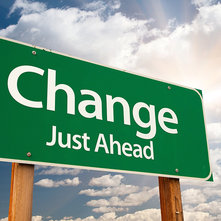 A new year brings with it new possibilities. It’s a chance to start over (again). We set goals, make resolutions to end harmful behaviors and learn healthy ones.
A new year brings with it new possibilities. It’s a chance to start over (again). We set goals, make resolutions to end harmful behaviors and learn healthy ones.
Consider adding these 5 ingredients for your wellbeing in 2015:
- What gives your life meaning? Are you involved with something or someone you love that goes beyond yourself? Is it your work, a social cause or an idea that lives in your mind that needs to be put into action? What will live after you? A cause, a charity, a pet — what makes you happy? Do you need to cultivate more of this in 2015?
- Trust in yourself. Think about all the transitions and problems you’ve solved in your lifetime. Take note of how creative you were. Trust that you can set a goal to change and do it — your way. If you want to quit smoking, lose weight, save money, write that book, you can. You can do what you want to do. Trust those “crazy” ideas that pop into your head. Some of them could be creative genius!
- Use every experience to succeed. As long as you don’t quit, you have not failed. Not many of us set our sights on a goal and go straight toward it without a bump or obstacle to overcome. That’s just part of it. Start again. Don’t quit.
- You say you’ve already met your goals? You have a happy family, a good job, financial security, health and happiness? Your goal will be to not jeopardize your good fortune. Make family a priority, live a healthy lifestyle and radiate happiness and peace. Be a good role model for the rest of us.
- Be open to new experiences. Look in the bookstores and you will see a large section of books devoted to Personal Growth or Personal Development. Learn to love learning and growing. Have ambitions, make independent choices, claim your dream, make friends and have the courage to face the unknown, believing you will learn more about yourself.
If you need help with setting up your goals for 2015, feel free to reach out to me at DrB@earthlink.net.
“Learn from the mistakes of others. You can’t live long enough to make them all yourself.”
~ Eleanor Roosevelt








